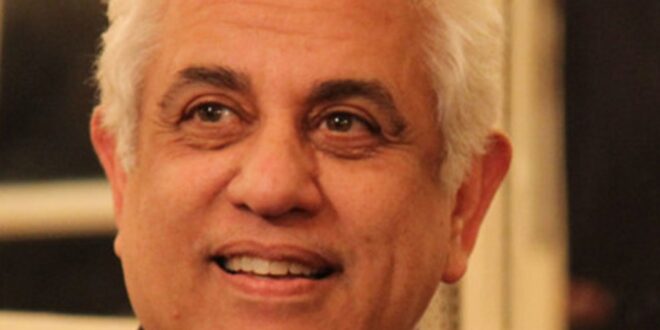On the cafe of dreamers of tomorrow
Respect for the constitution
A young man who is a business management graduate said to me, “Dr. what is the difference among the organization, setting of work rules and the actual business management and controlling it?”
I said, “Your question includes the answer … in Arabic language and culture, there is a confusion regarding the matter in the minds, for example, the State is the main provider of the school education service and the private, investment and international sectors provide the educational service for not more than ten percent of the pupils … but in the higher education, universities and high institutes, the state’s role is different … the state her is an organizer of the educational service because according to the constitution , the universities manage themselves independently within organizational framework set by the state.
There is a significant difference between role of the state in pre-university education and role of the state in the higher education …. If the state interferes in management of the universities whether they are governmental, public or private, so it breaches its organizational role set forth in the constitution and set out also in Egypt Vision 2030 in the same time. If state abandons its role in providing the pre-university education service in the schools, it violates the provisions of the constitution as well.
The smart young man said that the most people are not familiar with provisions of the constitution Dr. ….
His female colleague asked, ” If there were provisions of the constitution and laws were promulgated to apply them?”
I said, ” Why don’t you search for yourselves!! Let’s review provisions of the constitution and discuss what was implemented thereof and the laws issued for applying them …
The young woman researcher: let’s have a look at education and the health and in each dialogue we continue discussing other subjects to which the constitution referred. We will do this with a view to drawing attention of the new parliament members and also to raise awareness of the society about constitution of his country.
I said, “It’s a great idea ….. articles of the constitution which tackles the education and the assignments given in Egypt Vision 2030 on them are as follows:
I will divide the article into parts and let you ask questions about what was implemented and what is not implemented after 6 years from promulgation of the constitution.
Article 19
- Every citizen has the right to education with the aim of building the Egyptian character, maintaining national identity, planting the roots of scientific thinking, developing talents, promoting innovation and establishing civilizational and spiritual values and the concepts of citizenship, tolerance and non- discrimination. The state commits to uphold its aims in education curricula and methods, and to provide education in accordance with global quality criteria.
- Education is obligatory until the end of the secondary stage or its equivalent. The state grants free education in different stages in state educational institutions as per the law.
- The state commits to allocating a percentage of government spending that is no less than 4% of the GDP for education. It will gradually increase this until it reaches global rates
The state oversees education to ensure that all public and private schools and institutes abide by its educational policies.
Article 20
- The state commits to encourage and develop technical education and professional training and expand all types thereof in accordance with global quality criteria, in keeping with the needs of the labor market.
Article 21
- The state guarantees the independence of universities, scientific and linguistic academies. It commits to providing university education in accordance with global quality criteria.
- It commits also to developing free university education in state universities and institutes as per the law.
- The state allocates a percentage of the government expenditure that is no less than 2% of Gross National Product (GNP). It will gradually increase until it reaches global rates.
- The state works on encouraging the establishment of non-profit public universities.
- The state guarantees the quality of education in private and public universities, their commitment to global quality criteria.
- The state prepares their educational and research cadres, and allocating a sufficient percentage of its returns to develop the educational and research process.
Article 22
- Teachers and members of the teaching staff and their assistants are the main pillar of education. The state guarantees the development of their academic competencies and professional skills, and care for their financial and moral rights in order to ensure the quality of education and achieve its objectives.
Article 23
- The state grants the freedom of scientific research and encourages its institutions as a means to achieving national sovereignty, and building a knowledge economy. The state sponsors researchers and inventors, and allocates a percentage of government expenditures that is no less than 1% of Gross National Product to scientific research. It will gradually increase until it reaches global rates.
- The state commits to provide effective means of contribution for the private and public sectors and the contribution of expatriate Egyptians to the development of scientific research.
Article 24
- The Arabic language, religious education, and national history in all its stages are core subjects of pre- university public and private education. Universities are committed to teaching human rights, and professional morals and ethics relating to various academic disciplines.
- The state commits to developing a comprehensive plan to eradicate alphabetical and digital illiteracy for all citizens from all age groups. It commits to developing implementation mechanisms with the participation of civil society institutions according to a specific timeline.
Egypt Vision 2030 states in Education which was announced by president of the republic, which means necessity of compliance with it, the following:
- The first pillar: A high quality education and training system available to all, without discrimination.
- The second pillar: Establishment of an efficient, just, sustainable and flexible institutional framework for management of education, research and development.
- The third pillar: To empower the student, teacher and school management technically and technologically and development of the teaching means.
- The fourth pillar: Building integrated character of the student to be sincere, cultured and creative citizen who is proud of his country and eagers to build its future and be able to accept tolerance of differences and diversity.
- The fifth pillar: The graduate has to be initiator, able to adapt with the change of circumstances around him, create new job opportunities and compete with his colleagues regionally and internationally.
This vision governs any policies in education. In brief, for the higher education, the following are the ten policies for its development:
First: Reformulation of responsibilities of the state towards the higher education system, its universities and institutes.
Second: To widen the higher education system to meet the new student needs according to certain and announced vision that includes the technical education and professional training.
Third: Reorganization of roots of the educational institutions with a view to developing the quality and reaching the global levels we choose.
Fourth: Development of flexible and multiple system that comply with needs of the development. This system opens up the international organizations which are concerned with the improvement and updating the local and international teaching methods and research.
Fifth: Developing integrated and comprehensive plan as a basis for considering the scientific research and its activities as a life component in higher education institutions.
Sixth: Development of the dynamic relationship between the higher education institutions and labour market.
Seventh: Compliance with the academic and institutional integrity and showing this in message of each educational institution as it must reflect values of the truth, accountability and responsibility as main values in addition to respect of the scientific honesty and freedom as well as principles that respect equal opportunities and diversity.
Eighth: Merging the technology and digital culture in minds of the students and teaching staff based on a clear priority that doesn’t allow backing off.
Ninth: Governance of management of higher education institutions and efficiency of its organization.
Tenth: Development of the higher education environment by using sport, arts, teamwork and communication with the society to build a human who accepts the diversity and has skills of 21st century in order to be able to compete globally and learn to coexist with others without fanaticism or violence.
I stress again that responsibility of the state should continue towards the higher education but in different formulation and form comparing to situation of the matters through the past years. We find that it is necessary to liberate the higher education from: Control of the government, as this characterized the universities with the political tendencies over a long time period.
Commitment of the government towards the higher education doesn’t mean that all higher education institutions should be owned and managed by the government as this situation transferred all the cultural corruption lied in sides of the public sector and its practice to these institutions in varying degrees. Tendency towards encouraging the public universities shall be within framework of its global definition and not to be another form of the governmental education against expenses that is out of the philosophy of society in higher education which is distinguished with equal opportunities and not to be circumvention of the free education.
Moreover, these institutions shall be managed by, in my point of view, independent councils by quadrate representation representing in the state, civil society, academic community and the private sector. This conception can be developed and it is possible to add other stakeholders in different forms. The representation percentage may need to be discussed to ensure the relative balance among these entities.
Let’s discuss the constitutional commitments and what is done for its implementation in the next essay.
 Dr. Hossam Badrawi Official Website
Dr. Hossam Badrawi Official Website


